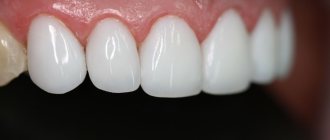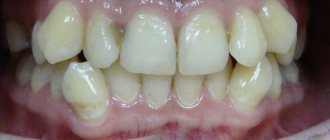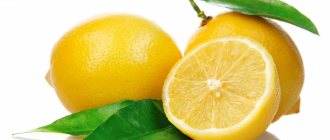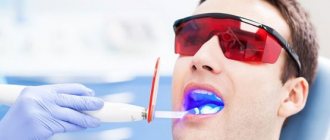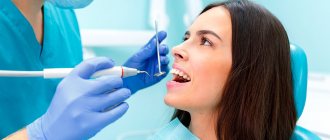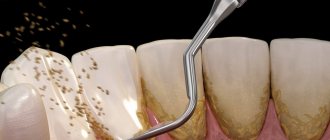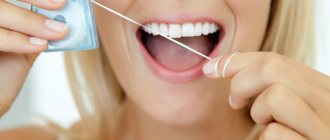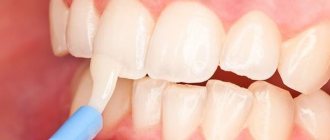The benefits and harms of cleaning with soda
Even dentists say that brushing your teeth with soda at home is not a prohibited procedure. Patients often use this technology. It is important to strictly follow the regulations and methods so that the enamel is not damaged. Sodium bicarbonate works well against bacterial film, dirty deposits and soft deposits. Thanks to this, the effectiveness of soda is equal to that of an abrasive paste. Of course, when the shade of the crown is changed for other reasons, complex treatment will be required.
The provoking factors of the pathology are determined by the dentist. He also makes a decision about carrying out soda cleansing, weighing the benefits and harms of the folk method. In addition to the safety of this ingredient, which is used in cooking, the advantages include:
- Cost-effectiveness and affordability, no unnecessary expenses.
- The homemade paste component can be purchased at every grocery supermarket.
- The effectiveness of the substance approaches the effect of professional cleansing of the oral cavity. By the way, many cleaning mixtures contain soda powder mixed with hydrogen peroxide.
- Rapid positive changes. The results are visible after the first session. If the procedure is performed regularly, the result will be lasting.
But even such a natural product cannot be used uncontrollably so as not to cause a negative reaction. Since it is an abrasive, plaque is removed mechanically. Therefore, small scratches gradually appear on the enamel layer. Some people experience irritation of the gum tissue and bleeding gums may occur. Allergic reactions also occur. Therefore, in order to prevent thinning of the enamel and increased vulnerability, you should consult a dentist before the procedure. The method is safe for thick enamel, which is not prone to pathologies and destruction. Although the abrasive particles are small, they still scratch the surface of the crowns.
Whitening teeth in dentistry
In their practice, dentists use modern, effective and safe teeth whitening techniques.
The reactive oxygen species that is released when gels are activated is the basis of almost all modern teeth whitening technologies. To increase the effect of the gels, the process is carried out under the radiation of halogen, LED or ultraviolet lamps (zoom 4).
The main benefits of teeth whitening at the dentist are:
- Speed of the procedure. The average duration is no more than an hour.
- High efficiency. In one session, tooth enamel can become 12 shades lighter.
- Duration of wear. With proper care, the result of a snow-white smile lasts up to 5-7 years.
- Safety of the procedure. The doctor carefully monitors the entire process and minimizes possible damage to health in all possible ways.
But there are also a number of disadvantages (or inconveniences) that a patient may experience during professional tooth enamel whitening:
- Staying in one position for a long period of time. This may not be to everyone's liking.
- The risk of developing enamel sensitivity increases.
- For several days you will have to abstain from coffee, strong tea and other colored foods and drinks. You will need to minimize the number of cigarettes you smoke or give them up completely.
- Dentures and fillings should not be bleached. In this regard, they may need to be replaced.
The latest advancement in professional whitening is laser whitening. This is a quick and gentle way to whiten enamel. The patient experiences minimal discomfort, and the risk of getting a burn is reduced to zero, since the procedure does not heat the tissue. The laser quickly penetrates the enamel without drying it out. In addition, the radiation from the laser compacts the enamel. However, the cost of this procedure is very high.
How to reduce negative impact
There are simple rules that are aimed at reducing the harmful effects of abrasive particles. If you use the product correctly, it will not cause harm. The main condition is consultation with a specialist and implementation of his recommendations.
- The manipulation is carried out once a week, or even once a week. Frequent use is harmful.
- If the units are weak, then sessions are held once every two weeks or even less often.
- When using the active composition, a toothbrush is inappropriate so as not to cause additional aggressive effects on the enamel.
- You should use cotton swabs, sticks, and fingers.
- It is necessary to establish a balanced diet, which restores the damaged enamel layer as much as possible.
- It is useful to use pastes that have a high content of useful mineral elements, primarily calcium and fluorine.
- Therapy is stopped when the first symptoms of crown vulnerability appear.
- Only after a long break can you resume the course of soda therapy.
We must not forget about professional hygienic cleaning of the oral cavity. This will have a positive effect on the condition of the chewing organs and gums. If there is no dirty deposits, it will be easier for the dentist to detect caries. After in-office cleaning, the dentist can easily select the color of the filling material. The beauty of the dentition will be preserved only when the patient visits the hygienist once every 6 months. Orthodontic therapy requires more frequent professional hygiene sessions.
Mechanism of action of cleaning products
Soda and sodium chloride (salt) are the strongest abrasives, consisting of tiny crystals that, when they fall on any surface, literally corrode it. If you rub the surface further, i.e. additionally act mechanically, then the crystals of salt and soda scratch it and remove not only the layer of dirt, but also destroy what is underneath it. That is, when applied to the enamel and your excessive activity (some believe that with intensive cleaning the whitening effect will be better), these products can remove not only plaque, but also damage hard tissues and disrupt their integrity.
“I scrub the stove and bathtub with soda, and sometimes scratches remain on them, as if they had been sanded or filed. By analogy, the same thing awaits enamel, so I wouldn’t risk it, even if I knew for sure that the effect would be positive. You definitely can’t force me to do this...”
Fiona, review from woman.ru
Methods for whitening tooth enamel with soda
Harmless whitening of crowns with soda abrasive does not imply its use every day. Most often the powder is used in dry form. The essence of the procedure: solid particles remove dirty accumulations from crowns. The units become clean, natural in color. But other options are also possible:
- A good mixture is obtained when fluoride toothpaste and baking soda are combined. To clean, you can use a soft-bristle toothbrush.
- You can whiten enamel by adding lemon juice to sodium bicarbonate. Before using this mixture, you should consult a dentist, because it is used for a healthy oral cavity and chewing organs.
- Bad breath will go away if the powder is first extinguished with a solution of citric acid.
- The cleaning mixture is also made from powder and fresh strawberries. After the procedure, rinse your mouth thoroughly.
- Many people use concentrate. It's easy to prepare. The powder is first dissolved in a small amount of water, gradually adding soda and stirring until the powder stops dissolving.
- A cleaning composition with increased efficiency is prepared from soda powder and hydrogen peroxide. Do not allow the product to come into contact with gum tissue.
Recommendations
If you still want to brush your teeth with soda, then you need to know how to reduce the negative impact and get the maximum benefit from this procedure.
- Under no circumstances should you use baking soda very often. Of course, this way you will see quick results, but later it will not lead to anything good. Use this product no more than once every 10 days. Sometimes the distance between cleanings can be increased. For example, if according to your plan you were supposed to use baking soda on Thursday, and on Sunday you have a very important meeting planned and you want to use the powder again, then it is better not to do this. Reschedule your cleansing to the day of an important meeting. Baking soda is not suitable for daily use.
- Avoid using a toothbrush. You can only apply baking soda to your teeth using your fingertips. This must be done very carefully; you should not use force, as this will damage the enamel.
- Choose toothpastes that are enriched with various minerals. This will help your teeth be strong and healthy.
- Particular attention should be paid to calcium. It must be obtained in sufficient quantities from food. Cottage cheese, tofu, beans and nuts must be present in your diet.
Should you brush your teeth with soda?
Timely removal of dental plaque is important for oral health. This can be done in the dentist's office using ultrasound. The technique is based on converting electrical energy into mechanical vibrations. The manipulation is performed with a special device - a scaler. The vibrations dislodge dirty deposits. The procedure takes about an hour. Soft accumulations are removed using a powder jet method. The technology involves the use of an aerosol and soda abrasive. Food-grade sodium bicarbonate is often used at home. This method has many advantages:
- It disinfects well and kills pathogenic bacteria and fungi.
- It has a cleansing effect, removing impurities and brightening the enamel.
- Tissue regeneration occurs thanks to active substances.
- Small wounds and cracks in the mucous membrane heal quickly.
The complex effect of soda helps maintain an attractive smile and oral health without expensive manipulations. It is important that the rules for using the substance are not violated.
Clinical researches
Clinical studies have proven that regular use of preventive toothpaste ASEPTA SENSITIVE for a month can reduce bleeding gums by 62%, reduce the sensitivity of teeth and gums by 48% and reduce inflammation by 66%.
Sources:
- Clinical studies of antisensitive toothpaste “Asepta Sensitive” (A.A. Leontyev, O.V. Kalinina, S.B. Ulitovsky) A.A. LEONTIEV, dentist O.V. KALININA, dentist S.B. ULITOVSKY, Doctor of Medical Sciences, Prof. Department of Therapeutic Dentistry, St. Petersburg State Medical University named after. acad. I.P. Pavlova
- The role of anti-inflammatory rinse in the treatment of periodontal diseases (L.Yu. Orekhova, A.A. Leontyev, S.B. Ulitovsky) L.Yu. OREKHOVA, Doctor of Medical Sciences, Prof., Head of Department; A.A. LEONTIEV, dentist; S.B. ULITOVSKY, Doctor of Medical Sciences, Prof. Department of Therapeutic Dentistry of St. Petersburg State Medical University named after. acad. I. P. Pavlova
- Report on determining/confirming the preventive properties of commercially produced personal oral hygiene products: Asepta toothpaste used in combination with Asepta mouthwash and Asepta gum balm Head. Department of PFS Doctor of Medical Sciences Professor S.B. Ulitovsky St. Petersburg State Medical University named after Academician I.P. Pavlova. Faculty of Dentistry. Department of Preventive Dentistry.
Cleaning sequence at home. Recipes
Each person uses baking soda differently for their teeth. But it’s worth knowing about all the features of using it at home.
- Dry powder in a small amount can be applied to the fingertips and treated teeth.
- You can also use cotton pads, but this procedure is not pleasant for everyone.
- Soda is also added to the paste. It's good if your toothpaste contains fluoride.
Reference! A regular brush will do for cleaning.
With soda
Prepare the most common solution. Mix two teaspoons of baking soda and 100 ml of water at room temperature.
Important! Do not extinguish the powder with hot water.
Take a toothbrush and dip it into the resulting solution. Brush your teeth in your usual way.
With hydrogen peroxide
There is another effective and good way. Peroxide has powerful oxidizing properties .
During interaction with organic substances, it begins to release carbon dioxide and water. Gas molecules help lighten the enamel. Hydrogen peroxide is used only with soda .
To prepare the solution, prepare three percent peroxide and baking soda. The ingredients are mixed until smooth. You need to brush your teeth for no more than three minutes, and then be sure to rinse with water .
Types
Some patients, out of ignorance, do not distinguish between teeth cleaning and teeth whitening - these are different events, each aimed at its own result. Several types of cleaning have been developed in dentistry, the most popular:
- ultrasonic scaler;
- laser machine;
- "air flow";
- hygienic (manual).
Each of these types of cleansing has pros and cons. The methods are designed to get rid of problems (according to severity level).
- Ultrasonic cleaning optimizes the condition of the gums and stops bleeding. The scaler has several contraindications.
- Laser cleaning kills microorganisms and has a healing property – it heals mouth ulcers.
- “Air flow” cleaning is performed using an air stream with an abrasive. There are contraindications.
- Hygienic cleaning is a method of removing plaque using specialized dental brushes and hooks - this is a gentle method of removing tartar. Today, hygiene procedures at the dentist are used less frequently than others.
Only a dentist can choose the right way to clean enamel. When choosing, he takes into account the method suitable for a particular patient, age, and dental condition.
What is prohibited after professional teeth cleaning?
The procedure increases the sensitivity of the enamel, so dentists are categorically against smoking during this period. You should also not eat food containing artificial or natural colors - coffee drinks, any types of tea, wine made from red grapes.
Beetroot juice, carrots, and berries that have an intense black, blue, and red color act in a similar way.
It is forbidden to drink liquids that increase the sensitivity of tooth enamel. These include highly carbonated drinks, lemon and apple juice. It is forbidden to use rinses containing alcohol for two weeks; a brush with hard bristles is not recommended.
Contraindications to professional teeth cleaning
There are many positive effects from the procedure, but there are also negative aspects and associated contraindications for use. These contraindications do not apply to every patient, but only in exceptional cases when the patient has individual distinctive characteristics of the gums or teeth.
- Sensitivity of the gums and enamel - the procedure can be performed, but it will be painful, which is negatively perceived by patients.
- Periodontitis and other oral pathologies are present.
- Age less than 18 years.
- Bacterial and viral diseases.
- Allergy to medications and products used in the process.
- Increased heart rate, arrhythmia.
- Dangerous infections (hepatitis, tuberculosis, AIDS or HIV).
- Multiple foci of caries.
The dentist’s duty is to ask the patient about all of the above. Even if the disease or condition is not directly related to dental matters, it influences the doctor's decision.
A dentist who values his reputation will not agree to perform a procedure even for money if it harms the patient.
Professional teeth cleaning for pregnant women
Pregnancy is an important stage in the fate of a woman and her baby. The expectant mother wants to look attractive, but does not agree to put the baby’s health at risk for this. It is not surprising that pregnant women are constantly wondering whether the event will harm the baby?
There is no danger to the fetus, this is a recommended measure for pregnant women, the gynecologist will approve it.
A pregnant woman's body undergoes a powerful restructuring, in which the teeth also participate - their condition changes dramatically. The enamel becomes thinner, the tooth becomes vulnerable to the slightest infection. The procedure, performed competently and professionally, will protect the teeth by reducing the number of bacteria in the mouth. It is safe for the fetus and the pregnant woman, does not affect the systems and organs. No medications are used during the procedure, which is fundamentally important for pregnant women.
Teeth brushing “air flow”
This type of procedure requires a dental device that performs cleaning with a highly targeted, powerful air jet. Air under enormous pressure quickly blows away plaque, traces of nicotine and food.
Some patients experience teeth whitening by several shades after this medical procedure, but such a side effect does not always happen.
After removing the plaque, if a person returns to the old lifestyle, the color of the teeth returns to their original state, they again acquire their natural shade. For the procedure to be effective, an abrasive and water are used. The abrasive used is baking soda, which does not harm the body and enamel. The advantage of this option is that the results last for a long period.
A variation of the “air flow” technique is the “perio-flow” procedure, which focuses on crushing stone under the gums. For this procedure, instead of soda, another abrasive based on a medical substance is used. Contraindications to the use of “perio-flow” are gum diseases, because it provokes an inflammatory process.
Ultrasonic teeth cleaning
This technique requires the presence of special equipment that produces ultrasonic waves. Under the influence of ultrasound, the stone crumbles and peels off from the enamel. The wave is directed and focused using a special hook (scaler). There is a negative side to the technique - ultrasound causes vibrations that heat not only the stone, but also the enamel.
To reduce this effect, preserve the enamel and avoid discomfort, water pressure is simultaneously transmitted. Thanks to the action of water, the tooth does not heat up, and microparticles are removed.
Modern ultrasonic devices even remove plaque concentrated on the gums, maintaining their health. Ultrasound cleaning in a normal oral cavity is painless and safe for an absolute number of patients.
For some patients with hypersensitivity and chronic dental diseases, ultrasound is contraindicated - it can cause pain and relapse of the disease.
Laser teeth cleaning
Enamel and tartar have different percentages of water content - this is the basis for the mechanism of action of the laser procedure. There is much more water in tartar, so the laser beam promotes explosive boiling of water and crushing of harmful deposits.
In addition to removing unwanted deposits on teeth, the laser has a bactericidal effect. Thanks to this, pathogenic bacteria in the oral cavity die and the enamel is strengthened.
Laser treatment is an effective measure even in terms of external effect - the enamel becomes one or two shades lighter. In addition to cleaning, there is also laser whitening - you need to understand that these are different events.
Indications for rinsing with a solution of soda and salt
As a preventive procedure, it is recommended to rinse with sodium bicarbonate, as this has the necessary antimicrobial effect. The main indications for rinsing with soda and salt in the required proportions:
- Dental diseases. Gingivitis, stomatitis, periodontal disease and other pathologies in which the gum canal is damaged.
- Hygienic. Aimed at removing food debris and plaque from hard-to-reach areas.
- Therapeutic and prophylactic. Rinsing your mouth with soda can also be done as a preventative measure.
All therapeutic rinses must be performed only after consultation with a doctor. Only a dentist can determine whether in your case it is possible to rinse your mouth with soda, salt and iodine. This procedure has certain contraindications, so improper use can lead to deterioration of health and significant harmful effects.
Indications
Enamel becomes unhealthy due to various factors. Teeth become yellow or dark. The main reasons are :
- lack of oral hygiene;
- coffee, tea and smoking prevent the appearance of plaque;
- silver amalgam filling;
- an injured tooth with a damaged neurovascular bundle;
- drinking water with the maximum amount of fluoride.
Important! This remedy can be used by those who suffer from yellow plaque, unpleasant odor and caries.
If a person has tartar, then baking soda powder will help get rid of it. The product can remove even hardened plaque.
What is Priestley's plaque?
This plaque looks like black specks or lines of specks along the neck of the tooth. Plaque is quite tightly attached to the surface of the tooth and is difficult to clean with a regular brush.
It is usually found in children, although it can occur in adults.
There is no evidence that this plaque is somehow related to the pathology of the gastrointestinal tract.
This plaque is called bacterial, and for good reason: if you look at the plaque, it turns out that these are plaques created by a community of special bacteria, with a predominance of Actinomyces (Actinomyces naeslundii).
Black plaques have higher calcium and phosphate contents than uncolored plaques.
The black color is the result of the interaction of iron and copper ions (they are in our saliva) and hydrogen sulfide, which is released by plaque bacteria - the same actinomycetes.
How to clean crowns, implants and braces?
We all know how to brush our teeth. From a very young age, we are taught that to prevent caries we need to brush our teeth 2 times a day - in the morning after meals and in the evening before bed .
How to brush your teeth correctly
However, after dental treatment with the installation of braces, dentures or implants, teeth cleaning becomes more complicated and can turn into a real quest. This means you will need tips and special recommendations.
How to get around these numerous locks and how to clean the plaque around the braces? How to care for implants? Are special brushes needed for artificial crowns?
In this article, dentists from the KANO clinic network will clarify the issues of caring for teeth with dental structures.
How to clean crowns, implants and braces?
Veneers, crowns, bridges
After fixing ceramic veneers or crowns, you will not have any problems with cleaning them. After all, structures of this type completely repeat the anatomical shape of the teeth and are installed under the gum. Thanks to this, plaque does not settle at the border of the restoration and the tooth. In addition, ceramic structures are made in such a way that their surface is as smooth as possible, like its own enamel.
But if a bridge , then you will need additional hygiene accessories. It's all about the design of the prosthesis: in the area of the missing tooth, a so-called intermediate part is created - an imitation of the tooth. Such a hanging tooth never lies on the gum and does not put pressure on it in order to avoid “bedsores.” In the area of the front teeth, the intermediate part of the prosthesis slightly touches the gum, and in the area of the lateral teeth it lags somewhat behind the gum - it has a flushing part. This is designed specifically for ease of cleansing.
Hygiene after prosthetics
Superfloss, a dental brush and an irrigator will help you remove food debris from under the bridge and clean out plaque .
Read more about floss and brush
Irrigator
The unusual name “irrigator” hides an extremely useful device for home teeth cleaning. This is a compact device that delivers a stream of water under pressure to your teeth. Or not water, but a special solution - you need to pour it into the irrigator container yourself. You direct the nozzle to the gum area, the spaces between the teeth and under the rinsing part of the bridge - and the food remaining there is quickly washed away with a stream of liquid.
The intensity of the pressure can be adjusted, gradually increasing as you get used to the irrigator. In addition to removing plaque and food debris, the gums are effectively massaged, which improves microcirculation and prevents the development of gum disease.
Dentists from the KANO clinic network recommend purchasing an irrigator after installing any permanent structure.
Oral irrigator
The irrigator can be:
- Stationary: it can be placed on a shelf in the bathroom and, connected to a power source, can be used by the whole family. The main thing is for everyone to choose their own removable brush head, because they, like toothbrushes, should be individual.
- Portable: Similar in size to an electric toothbrush, it runs on a battery, making it easy to take with you on trips.
Irrigators tested and approved by our dentists: AquaPick, Oral-B, Philips AirFloss.
In a similar way, you can put in order the therapeutic version of the bridge - the adhesive prosthesis. Using superfloss (for example, from Oral-B ) and an irrigator, you can fully care for such a restoration.
Our dentist-therapist Ekaterina Konstantinovna Podobed will tell you how to clean composite veneers
And if you have a removable denture as a temporary splinting or restorative structure, then it is important to remember that it needs to be washed after every meal and cleaned every day - with a separate hard brush.
Implants
Well, implantation is over! Everything turned out to be not as scary as the imagination had pictured, moreover, in fact, it wasn’t even scary at all. But sometimes, in stressful situations, all the doctor’s words can fly out of your head, and then the patient leaves the office as if in a fog - without any idea of what to do next with the implants. Therefore, we have collected the main recommendations for you in one brochure article:
Recommendations after dental implantation
When, after installing an implant, the gum above it is tightly sutured, then it turns out that there is nothing to clean there. And if something is visible from under the gums - a gum former or a temporary crown is installed - then they also need to be looked after. You can clean with regular toothbrushes, but it is more effective to do this with specialized brushes. Curaprox and TePe have these , they can be recognized by the mark “for implants”. Other monotuft brushes are also good for this purpose.
Hygiene after implantation
Proper hygiene level must be maintained by using the irrigator . With its help, you can wash the space between the implant and the gum, and a brush, superfloss and dental brushes .
You should start using the irrigator one month after the implants are installed.
The same simple recommendations should be followed after fixing permanent crowns: metal-ceramic, zirconium or Cerec crowns. Even if it seems to you that the crown on the implant is installed very tightly, you can and should still carefully clean underneath it.
All-on-4/6 implantation
The rules for caring for implants after complex implantation of All-on-4/6 do not differ from the classical rules for caring for implants: superfloss, monotuft brushes and an irrigator . It will be very good if you can purchase a portable irrigator and use it after every meal.
The rules of hygienic care after complex implantation of All-on-4/6 will be explained by our orthopedic dentist Anton Pavlovich Dobritsky:
However, home teeth cleaning alone is not enough to fully care for your implants. In order for implants to serve for decades, it is necessary to undergo professional implant hygiene . After all, the basis for the stability of an implant is the absence of plaque microorganisms around it.
How to extend the warranty on implants? You will find out the answer by watching our video:
Braces
On the first day after fixing the braces system, patients may feel slightly confused. How can you even clean food from under all these arches, rubber bands and clasps?
Yes, if you're not used to it, the time spent brushing your teeth will increase. Now for any brace wearer there are 2 types of teeth cleaning:
- cleaning after each meal (brush + brush and floss if necessary). Orthodontic patients should always carry a toothbrush and brush . After all, pieces of food get clogged under the arch, get stuck under wire and elastic ligatures, and get wrapped around braces (especially greens, melted cheese, halva). Agree, it looks unsightly.
- comprehensive teeth cleaning in the morning and evening (toothbrush + superfloss + brush + irrigator). Twice a day it is necessary to use not only a toothbrush (labeled Ortho or single-tuft), but also a superfloss to clean between the teeth. Around each bracket, it is necessary to additionally remove plaque using an interdental brush (TePe, Revyline) - it must be selected in size for ease of use. Don’t forget about the irrigator, because when cleaning teeth around braces, not a single product will be superfluous!
Brushing teeth with braces
An excellent additional means of supporting enamel is Tooth Mousse cream-gel. It saturates dental tissue with calcium and phosphorus ions, restoring mineral balance and preventing tooth decay.
During treatment with braces, dentists recommend that you undergo comprehensive teeth cleaning with Air Flow more often than usual - once every 3 months .
After all, if you neglect hygiene, then after removing braces you will see straight teeth in the mirror - but with white or even brown spots of caries.
Hygiene after dental intervention
Indeed, brushing teeth with dental structures requires a certain skill from the patient. However, if you approach the matter with enthusiasm and choose convenient equipment, the process of home hygiene will become a pleasant regular ritual for you. And the dentists at KANO clinics will be happy to explain all the nuances of cleaning crowns, braces and dentures and recommend the care products that are suitable for you.
